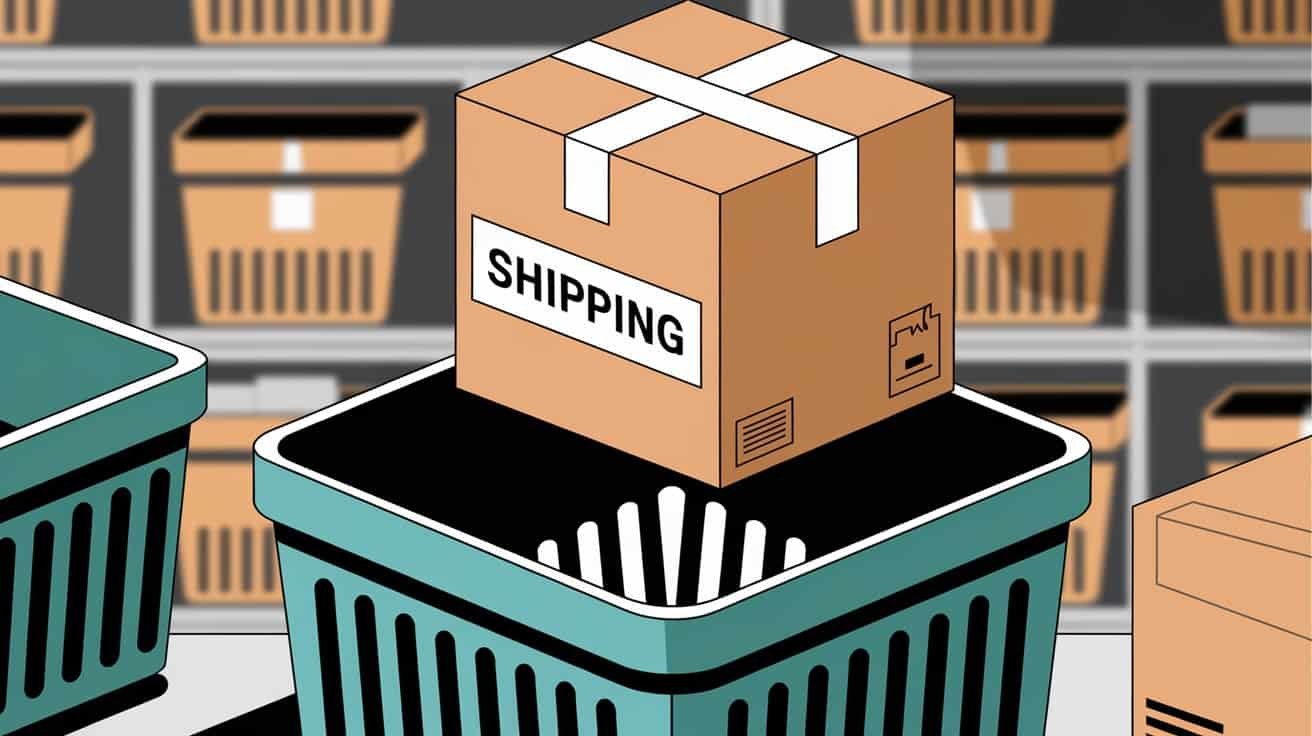In today’s dynamic digital landscape, various business models have gained immense popularity. One such business model is Drop Servicing. In this comprehensive guide, we will explore the concept of drop servicing, why it’s rapidly growing, its key features, and how you can set up a successful business in 2024. If you’re looking for a low-investment, scalable business model that capitalizes on the expertise of freelancers, this is your go-to option.

10 Key Insights into Drop Servicing
Here are the 10 Key Insights into Drop Servicing that can help you successfully start and grow a profitable business in 2024:
1. Low Startup Costs
It requires minimal investment to start. You don’t need to create a product, maintain inventory, or rent physical space. Most of the expenses involve setting up a website and promoting your services.
2. Outsourcing is the Core
The essence of servicing is outsourcing. You sell services to clients and then hire freelancers or agencies to complete the work for a lower price. You manage the transaction while others do the actual work.
3. High-Profit Margins
It offers high-profit margins because you’re marking up the price of the service. If you pay a freelancer $100 to complete a job that you charge a client $300 for, the $200 difference is your profit.
4. Service Niches Matter
Choosing the right niche is crucial. Focusing on high-demand services like SEO, web development, or video editing can give you a competitive advantage. Niching down allows you to target specific industries or clients more effectively.
5. Marketing is Key
The success of your servicing business hinges on how well you market it. SEO, content marketing, social media advertising, and email marketing are essential tools to attract clients and build credibility.
6. No Need for Specialized Skills
You don’t have to be an expert in the services you offer. Your main role is managing the business, acquiring clients, and ensuring smooth delivery of services. The execution of services is handled by skilled freelancers.
7. Scalability and Growth
It Drop servicing is highly scalable. As long as you have a network of reliable freelancers, you can handle an increasing number of clients and projects without needing to invest heavily in additional resources.
8. Automation Tools Enhance Efficiency
Automation tools like project management software (e.g., Trello or Asana), email marketing platforms, and CRM systems can help you manage tasks, track communication, and streamline your workflow, making it easier to scale your business.
9. Client Relationships Are Key
Maintaining strong client relationships is critical for repeat business and referrals. Providing excellent customer service, meeting deadlines, and delivering high-quality work ensure client satisfaction and loyalty.
10. Overcoming Challenges
Like any business, servicing comes with its own challenges, such as managing multiple freelancers, ensuring quality control, and handling customer expectations. However, by building a reliable network and automating processes, you can overcome these obstacles and build a sustainable business.
What is Drop Servicing?
Drop Servicing is a business model where you sell services to clients without actually fulfilling those services yourself. Instead, you outsource the work to freelancers or agencies, acting as the middleman between the client and the service provider.
1. How Does Drop Servicing Work?
- Step 1: You market and sell a service (e.g., website development, content writing) at a marked-up price.
- Step 2: Once the client pays for the service, you hire a freelancer to complete the job at a lower price.
- Step 3: The freelancer delivers the finished service to you, and you pass it on to the client.
- Step 4: The difference between what the client paid and what you paid the freelancer is your profit.
2. Why is Drop Servicing Gaining Popularity?
- Low Startup Costs: You don’t need to create a product or service yourself.
- Scalability: As you grow, you can hire more freelancers to handle increasing workloads.
- Flexibility: This business model allows you to offer multiple services across various industries.
Key Features of Drop Servicing Business
Drop Servicing has several core features that make it attractive to entrepreneurs:
1. Minimal Investment
You don’t need inventory, physical infrastructure, or high overhead costs to start. Most of the investment goes into building a website and marketing.
2. High-Profit Margins
By outsourcing work at a lower cost and charging clients a premium, your profit margins can be substantial.
3. Focus on Sales and Marketing
Since the actual service delivery is outsourced, your primary focus is on acquiring clients through marketing and sales efforts.
4. Diverse Service Offering
With drop servicing, you can offer a wide range of services such as graphic design, SEO services, copywriting, and video editing.
5. No Specialized Skills Required
You don’t need to be an expert in the services you offer, as long as you have freelancers or agencies doing the work for you.

How to Start a Drop Servicing Business in 2024
Launching a Drop Servicing business involves a series of steps to ensure that you have a robust system for attracting clients and delivering high-quality services.
1. Choose a Niche
Selecting a niche allows you to focus on a specific market and tailor your services accordingly.
- Benefits of Niching Down:
- Less competition
- Easier to target clients
- Better specialization
- Can charge premium rates
2. Build a Website
Your website will serve as the storefront for your drop servicing business. It should be professional, user-friendly, and optimized for conversions.
- Key Elements of a Drop Servicing Website:
- Clear and compelling service descriptions
- Strong calls to action (CTA)
- Easy-to-navigate user interface
- Customer testimonials and case studies
3. Find Reliable Freelancers
Partnering with dependable freelancers is crucial to your drop servicing business. You can find freelancers on platforms like Fiverr, Upwork, or via personal networks.
- Qualities to Look for in Freelancers:
- Proven track record and portfolio
- Good communication skills
- Reliable deadlines
- Positive reviews from previous clients
4. Create a Pricing Structure
Your pricing should reflect both the costs of outsourcing and the profit margin you aim for. Generally, a markup of 30-50% is a good starting point.
5. Marketing Your Drop Servicing Business
Marketing is essential to attract potential clients. Invest in SEO, content marketing, paid ads, and social media to reach your target audience.
Benefits of Drop Servicing
Drop Servicing provides numerous benefits, making it an appealing choice for aspiring entrepreneurs.
1. Low Overhead Costs
Since the business model revolves around outsourcing, you don’t need a full-time team or physical office space, reducing overhead costs significantly.
2. High Scalability
As long as you have access to reliable freelancers, there is no limit to how large your drop servicing business can grow. You can manage multiple projects simultaneously without needing additional infrastructure.
3. Flexibility and Freedom
You can run a drop servicing business from anywhere in the world as long as you have a laptop and internet connection. This flexibility allows for a better work-life balance.
4. Passive Income Potential
Once you establish a steady flow of clients and reliable freelancers, your business can run semi-automatically, enabling you to earn passive income.
Common Drop Servicing Niches
Choosing the right niche is vital for the success of your Drop Servicing business. Here are some popular niches in the drop servicing space:
1. Digital Marketing Services
These include SEO, content marketing, and paid ads management, which are always in high demand.
2. Graphic Design
Design services like logo creation, social media graphics, and website designs are commonly outsourced.
3. Content Writing
Freelance content writers are readily available to create blog posts, articles, and web copy for clients.
4. Video Editing
With the rise of video content, video editing services have become highly sought after in industries like eCommerce, education, and entertainment.
5. Web Development
Many businesses require website creation, but not all of them have the expertise in-house. Web development is a lucrative service to offer in a drop servicing model.

How to Manage Your Drop Servicing Business Effectively
Running a successful Drop Servicing business requires more than just outsourcing. You need proper management to ensure smooth operations.
1. Communication Tools
Use project management and communication tools like Trello, Slack, or Asana to keep track of tasks, deadlines, and team collaboration.
2. Quality Control
Always review the work provided by freelancers before delivering it to your clients to ensure it meets quality standards.
3. Client Relations
Maintain transparent and professional communication with your clients. Provide regular updates and ensure deadlines are met.
Challenges of Drop Servicing
Like any business model, Drop Servicing comes with its own set of challenges.
1. Finding Reliable Freelancers
Finding freelancers who consistently deliver high-quality work can be challenging.
2. Client Retention
Maintaining long-term relationships with clients requires constant communication, quality work, and timely delivery.
3. Price Competition
Some clients may look for the cheapest option, which could impact your profit margins.
4. Managing Multiple Projects
Scaling your business can make it harder to manage multiple freelancers and projects simultaneously.
How to Overcome Drop Servicing Challenges
To tackle the challenges of Drop Servicing, you must employ strategic solutions.
1. Build a Reliable Freelancer Network
Take time to vet and build relationships with dependable freelancers. Offering them consistent work can increase their loyalty.
2. Automate Your Processes
Automation tools like email marketing software and customer management systems can streamline your business and improve client retention.
3. Focus on Client Satisfaction
Offer exceptional customer service to retain clients. Go the extra mile by delivering high-quality work, providing quick responses, and meeting deadlines.
How to Scale Your Drop Servicing Business
Once you’ve established your Drop Servicing business, the next step is to scale it.
1. Diversify Your Service Offerings
Once you’ve mastered one niche, you can diversify into complementary services, providing more value to your clients.
2. Increase Your Marketing Budget
As you gain more clients, reinvesting a portion of your profits into marketing can help you scale faster.
3. Outsource Management Tasks
As your business grows, consider hiring a project manager to help with the day-to-day tasks, allowing you to focus on growing the business.
Is Drop Servicing the Right Business Model for You?
Drop Servicing is ideal for those looking for a low-cost, scalable business model with significant profit potential. If you have strong marketing skills and a knack for managing freelancers, this business model can provide substantial financial rewards with minimal overhead.
Why Drop Servicing is Necessary in the Modern Business Landscape
Drop servicing has emerged as a significant and necessary business model in today’s digital economy for several compelling reasons. Here’s why drop servicing is essential:
1. Democratization of Business Opportunities
Drop servicing enables anyone, regardless of their technical skills, to enter the service-based business market. With the ability to outsource tasks to skilled freelancers, entrepreneurs can start a business with minimal capital and expertise. This levels the playing field, allowing more people to become business owners, even without specialized knowledge in areas like web design, SEO, or content writing.
2. Low-Cost Entry for Entrepreneurs
Starting a traditional service business often requires significant upfront investment in equipment, infrastructure, and hiring skilled employees. Drop servicing eliminates most of these barriers by leveraging the gig economy. Entrepreneurs only need a website and marketing strategies, keeping overhead costs low while providing the potential for high profit margins.
3. Scalability Without Heavy Investments
Unlike many traditional business models, drop servicing is highly scalable without requiring additional infrastructure. Since the actual service delivery is outsourced, the business can handle a growing number of projects by hiring more freelancers, without needing to hire full-time employees or invest in physical office space. This scalability makes it easier to grow the business quickly and efficiently.
4. Increased Demand for Outsourced Services
As more businesses transition to digital platforms, the demand for services like graphic design, SEO, video editing, and web development has surged. Companies, especially startups and small businesses, often seek to outsource these services to save on costs and access specialized skills. Drop servicing caters directly to this demand, acting as a bridge between these businesses and freelancers.
5. Flexibility for Entrepreneurs
Drop servicing allows entrepreneurs to run their businesses from anywhere with an internet connection. This flexibility is especially important in today’s globalized world, where remote work and digital nomadism are becoming more common. The freedom to operate from any location and manage projects online makes drop servicing an ideal business model for those looking for work-life balance and autonomy.
6. Responding to the Gig Economy
The gig economy is rapidly growing, with freelancers contributing to a significant portion of the workforce. Drop servicing fits seamlessly into this model, as it leverages the skills of freelancers to fulfill client orders. This approach is necessary for keeping up with the modern workforce trends, where many individuals prefer freelance work over full-time employment.
7. Focusing on Core Competencies
Many businesses are now outsourcing tasks that are not part of their core competencies. For example, a startup may be excellent at developing new software but lacks the expertise in content creation or graphic design. Drop servicing businesses fill this gap by offering specialized services that companies can outsource, allowing them to focus on their core offerings.
8. Offering Cost-Effective Solutions to Clients
Drop servicing provides clients with cost-effective solutions by allowing them to outsource work without incurring the high costs of hiring full-time employees. Since drop servicers often have access to a wide network of freelancers, they can offer competitive pricing, making services more affordable for businesses of all sizes.
9. Adapting to the Changing Consumer Behavior
Consumers today expect efficiency and quick results. Drop servicing businesses can meet these expectations by connecting clients with the right service providers swiftly. As the intermediary, you streamline the process, ensuring that clients receive high-quality services while freelancers handle the technical aspects.
10. Entrepreneurs Can Build Passive Income Streams
With drop servicing, entrepreneurs can automate much of the business using tools like CRM systems, project management platforms, and marketing software. Once a reliable team of freelancers and automated systems are in place, the business can run semi-automatically, creating an opportunity for passive income.

Frequently Asked Questions (FAQs) About Drop Servicing
Here are some commonly asked questions about Drop Servicing to help you understand the business model better:
1. What is Drop Servicing?
Drop servicing is a business model where you sell services to clients and outsource the actual service delivery to freelancers or agencies. You act as the middleman, managing the transaction and earning a profit by charging a higher rate than you pay to the service provider.
2. How is Drop Servicing different from Dropshipping?
While both models involve acting as an intermediary, the difference lies in the product.
- Dropshipping deals with physical products, where the supplier ships items directly to the customer.
- Drop Servicing revolves around selling digital or creative services (e.g., graphic design, writing) that are outsourced to freelancers.
3. Is Drop Servicing Legal?
Yes, drop servicing is a completely legal business model as long as you’re transparent with your clients and the work is delivered as promised. It’s important to ensure that the freelancers you work with are compensated fairly and deliver quality work on time.
4. Do I need to have specialized skills in the services I offer?
No, you don’t need to be an expert in the services you provide. Your primary responsibility is to manage the client relationship and ensure smooth project delivery. The actual service is handled by freelancers with the necessary skills.
5. What services are best for Drop Servicing?
Some popular services for drop servicing include:
- SEO and digital marketing
- Web development and design
- Graphic design
- Content writing and copywriting
- Video editing
- Social media management
These services are high in demand, making them great options to offer in a drop servicing business.
6. How do I ensure the quality of services delivered?
To maintain high-quality standards in drop servicing, you can:
- Review the freelancer’s work before submitting it to the client.
- Clearly communicate your expectations and project requirements to freelancers.
- Work with freelancers who have a proven track record.
- Use project management tools to track progress and deadlines.
7. How do I find freelancers to work with?
You can find reliable freelancers on various platforms such as:
- Upwork
- Fiverr
- Freelancer
- PeoplePerHour
It’s crucial to vet your freelancers by checking their portfolios, reviews, and past performance to ensure they meet your quality standards.
8. Can I scale a Drop Servicing business?
Yes, drop servicing is highly scalable. As long as you have a reliable team of freelancers, you can manage an increasing number of clients and projects. Using automation tools like project management software and client relationship management systems can make scaling easier.
Conclusion
Drop servicing is an appealing business model for aspiring entrepreneurs in 2024, offering flexibility, scalability, and high-profit potential with minimal upfront costs. By leveraging the skills of freelancers, you can provide a wide range of services without needing to be an expert in those fields. The key to success lies in effective marketing, managing client relationships, and ensuring reliable delivery of high-quality services.
With the right strategies—such as choosing a profitable niche, building a strong freelancer network, and implementing automation tools—you can grow and scale your drop servicing business efficiently. While challenges like maintaining quality control and client retention exist, they can be overcome with smart management and consistent effort.
Whether you’re a beginner or an experienced entrepreneur, drop servicing offers an excellent opportunity to tap into the digital economy and build a profitable, sustainable business.





